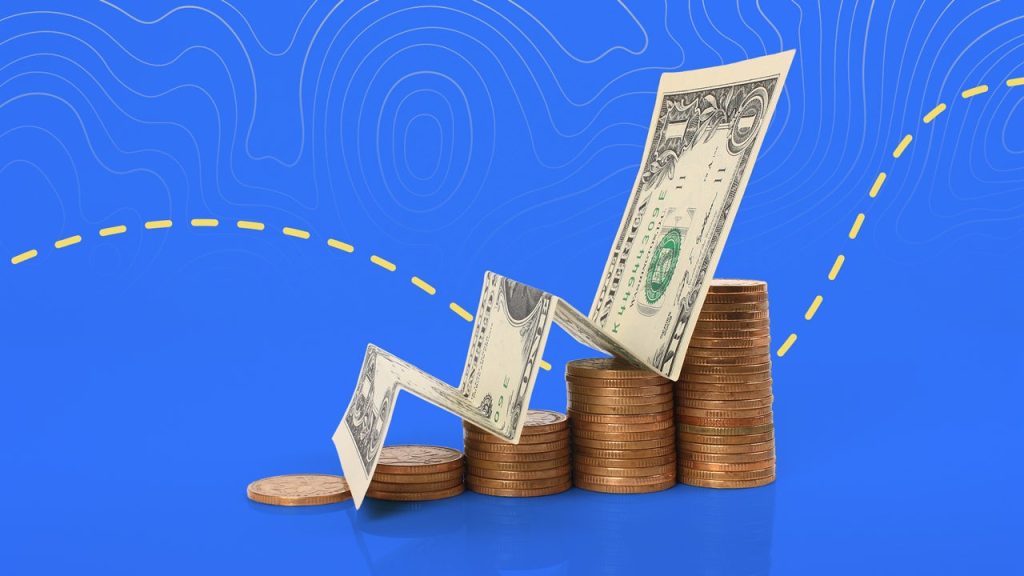LUHUANFENG/Getty Images; Illustration by Bankrate
Key takeaways
- A CD ladder is a savings strategy where you open multiple CDs with different maturity dates, allowing you to access portions of your money periodically while earning higher interest rates.
- Building a CD ladder involves opening several CDs with staggered terms (like 1, 2, 3, 4, and 5 years) and reinvesting each CD as it matures.
- CD ladders provide a balance between liquidity and higher yields, while protecting your money with FDIC or NCUA insurance up to $250,000.
What is a CD ladder?
A CD ladder is a savings strategy where you invest in multiple certificates of deposit (CDs) with staggered maturity dates. This method allows you to earn higher interest rates typically offered by longer-term CDs while maintaining periodic access to portions of your money.
When a given CD in your ladder matures, you have the flexibility to either could reinvest the funds in a new CD to maintain your ladder, use the money for a planned purchase, or move the funds elsewhere.
Pros
- Fixed-rate CDs provide predictable interest without market risk.
- If rates rise, you can reinvest maturing shorter-term CDs at higher rates. If rates fall, you still have longer-term CDs locked in at previously higher rates.
- Unlike putting all your money in one long-term CD, a ladder ensures portions of your funds become available at regular intervals.
- You can design your ladder to align with specific financial goals or timelines.
- Your money is protected up to $250,000 when you open CDs at FDIC-insured banks or NCUA-insured credit unions.
Cons
- Your money in CDs might earn less than more aggressive investments like stocks or bonds.
- If rates decline significantly, you’ll eventually have to reinvest matured CDs at lower rates.
- You need to track maturity dates to avoid automatic rollovers at potentially unfavorable terms.
- Your money is still locked in until maturity dates, with early withdrawal typically resulting in penalties.
- If inflation exceeds your CD yields, your money loses purchasing power over time.
How to build a CD ladder
Creating a CD ladder is straightforward once you understand the basic concept. You’ll need to decide how many CDs to open, how much to deposit in each, and what term lengths to choose.
Keep in mind these don’t need to be opened at the same bank or credit union — shopping around for the best CD rates can significantly increase your returns.
“If you simply renew a given CD, or open a new one at the same bank by default, you could be missing out on significantly higher rates available elsewhere,” says Karen Bennett, senior consumer banking reporter at Bankrate. “Ultimately, there’s no obligation to keep all your CDs at the same bank.”
1. Open the CDs
Let’s say you want to build a five-year CD ladder with five rungs. If you have $2,500 to invest, then you might divide the funds equally into five CDs with different maturity dates. Here’s how you could set it up:
2. Reinvest the money when the CDs mature
When each of the original CDs matures, you could continue to build your ladder by reinvesting the funds (principal and interest) in a new five-year CD. This will continue to give you a ladder of five CDs, with one maturing each year:
- $500 (original CD principal) + one year of interest in a five-year CD
- $500 (original CD principal) + two years of interest in a five-year CD
- $500 (original CD principal) + three years of interest in a five-year CD
- $500 (original CD principal) + four years of interest in a five-year CD
- $500 (original CD principal) + four years of interest in a five-year CD
Following this strategy, you’ll eventually have five five-year CDs, with one maturing each year. This provides you with regular access to funds while maintaining the higher interest rates typically offered by five-year CDs. Remember that early withdrawals from CDs typically incur penalties, though some banks offer no-penalty CDs if liquidity is a primary concern.
Alternative CD ladder structures
There are several ways to modify a traditional CD ladder strategy based on your goals:
- Mini CD ladder: Creating a CD ladder with only shorter-term CDs could be an option for savers who don’t wish to invest in longer-term ones. For instance, such a ladder could consist of terms of six, nine, 12 and 18 months.
- Barbell CD ladder: A barbell CD strategy is similar to a traditional CD ladder, but the middle rungs are missing. As such, short-term CDs make up one end of the structure, while long-term CDs comprise the other end. A potential benefit of this is you could have access to some of your funds sooner, while taking advantage of longer terms with potentially higher rates, if available.
- Bullet CD ladder: Open several CDs with different term lengths that will all mature simultaneously. For example, open a five-year CD now, a four-year CD next year, and a three-year CD the following year – all maturing in the same target year. This approach works well for planned major expenses like a down payment or college tuition.
Are CD ladders good investments?
Whether a CD ladder is right for you depends on your financial goals, risk tolerance, and liquidity needs.
Maximizing returns with CD laddering
CD ladders shine when you want guaranteed returns without market risk. While current best CD rates are above 4 percent APY, they typically won’t match potential returns from stocks or other higher-risk investments over the long term.
However, CD ladders offer something these investments can’t: certainty. You’ll know exactly how much your CDs will earn when you open them, providing valuable stability for part of your financial portfolio.
Flexibility and liquidity in CD laddering
CD ladders provide a middle ground between complete liquidity (like a savings account) and long-term commitment (like a single five-year CD). With a ladder, you’ll have CDs maturing at regular intervals, giving you periodic access to your funds without sacrificing all the higher interest of longer-term CDs.
If you’re unsure about tying up your money, consider keeping your emergency fund (3-6 months of expenses) in a high-yield savings account for immediate access, while using a CD ladder for other savings goals.
Risk reduction through CD laddering
CD ladders help manage interest rate risk – the possibility that rates will change after you’ve committed your money. If rates rise, you’ll have CDs regularly maturing that can be reinvested at higher rates. If rates fall, your longer-term CDs will continue earning their higher, locked-in rates.
This makes CD ladders particularly valuable during periods of interest rate uncertainty or volatility.
Bottom line
A CD ladder offers a strategic approach to saving that balances higher interest rates with periodic access to your money. Staggering various maturity dates with multiple CDs may allow you to have a little more control over your money while still taking advantage of guaranteed returns.
The ideal CD ladder structure depends on your specific financial goals, timeline, and comfort with locking away funds for various periods. For maximum returns, always compare rates across different financial institutions when any CD in your ladder matures, rather than automatically renewing with the same bank.
Read the full article here









